Hi John - sorry for such a late reply - I was hoping to be further along on my Bumblebee progress, but hit some speed bumps along the way. So ... I'll just update where I'm at right now. It was kind of you to ask, thanks

. Wow, was it all the way back in April that I last posted here? Gee how time flies!

I had ended up with about 26 Bumblebee offspring before my store-bought adults passed on - considering their circumstances (imported, storebought, then living with me who has less than ideal conditions), they did okay, and probably lived a little over a year; I had gotten them when they were already mature.
Unfortunately in the last two weeks, things went south and I lost at least 8 of the offspring ... ouch. Thankfully, things are back under control and everything is holding steady. The offspring are already sexually mature and have had eggs, but they are dropping them except for 1 - 4 eggs. So I am still waiting to see if I can manage getting a second generation going. I only have about 4 females right now (had a very unusual ratio of males to females!); hopefully these females will hang in there and do better with their eggs, the next time around.
So how is everyone else's Bumblebees doing? Anyone getting a good generation or two of offspring? Any experiences (good or bad) or observations to share? Am I the only one having a slow time of it and everyone else is "breeding them like crazy?" lol.
Mustafa wrote:GunmetalBlue wrote:Back on topic to color variations, I'm curious to see what the babies will look like as juvies.
Yes, I am curious about that, too. Keep this thread supplied with new pictures to that end. ... The current bumblee in your picture looks almost like a hybrid as it has some bee-shrimp-like markings on the lower part of its abdomen, but it's impossible to say for sure. I will have to deliberately conduct some hybridization experiments in the future to clarify this issue. I've already done that with the bee and tiger shrimp and there is absolutely no doubt that both species hybridize...but I have not conducted any experiments with bumblebees yet.
I would be extremely interested to see what the results are, if/when you get a chance to experiment for a Bee and Bumblebee (black-headed) combo. So I'll leave some offspring pictures here to that end, for future comparison purposes. If they are Bumblebee/Bee hybrids, it's just as well that they are mine, since I don't sell/exchange shrimp. And sorry it took so long for me, getting around to doing this, Mustafa; they are hard for me to take decent pictures of, they don't photograph well off the dark substrate (Unlike RCS). I have to wait for them to get on a leaf and they are quick.
Here are some Bumblebees with the three dark stripes on the band on the lower abdomen near their tail ... and something to note is that if you go back to the first page, some of the shrimp in the original first batch with which I opened this topic, had the three dark stripes too. Also interesting to note is that the "hooks" at the bottom hook forward, unlike bee shrimp, which tend to hook back.
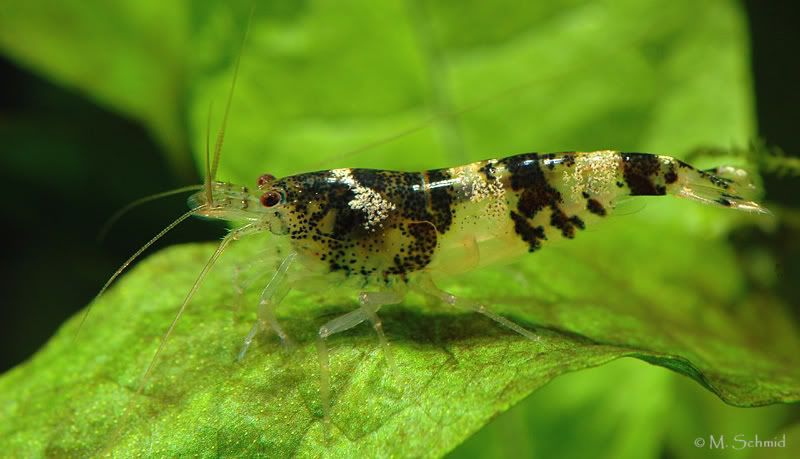
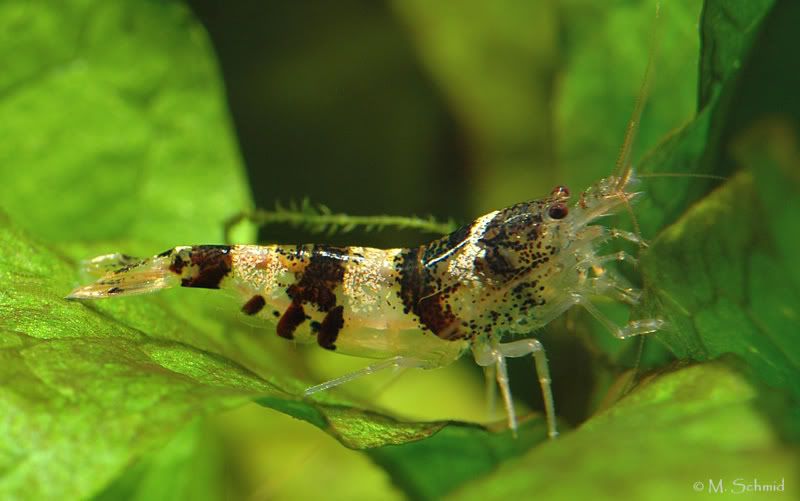
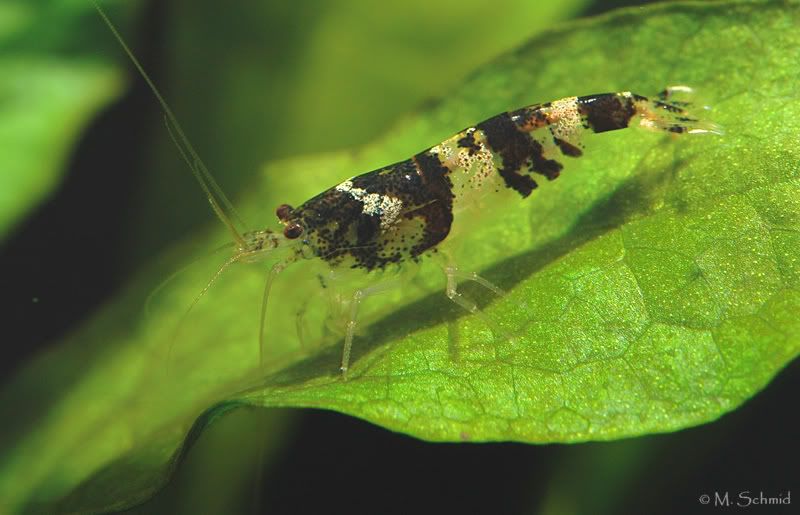
Here are the ones with two stripes on the band on the lower abdomen near their tail. Incidentally, I only ended up with one offspring that had more or less a solid band like the father, I lost him though.
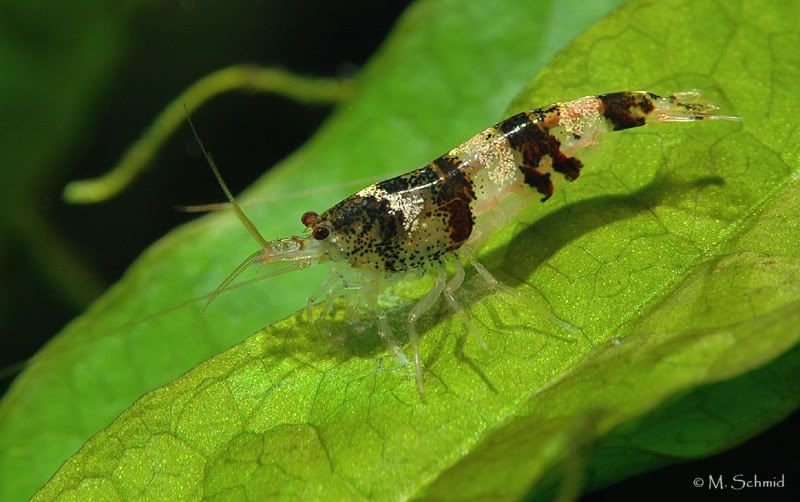

As to the females, all of mine have three dark stripes on that part of the abdomen, just like their mother had, and are rather plain. Here's a typical female; their head often does not show the first light stripe.
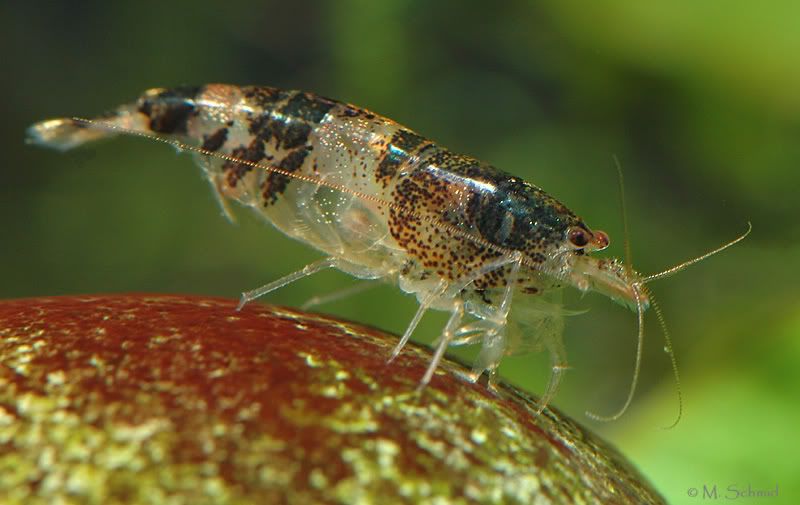
Although I do have a female that's a little more interestingly patterned/colored:
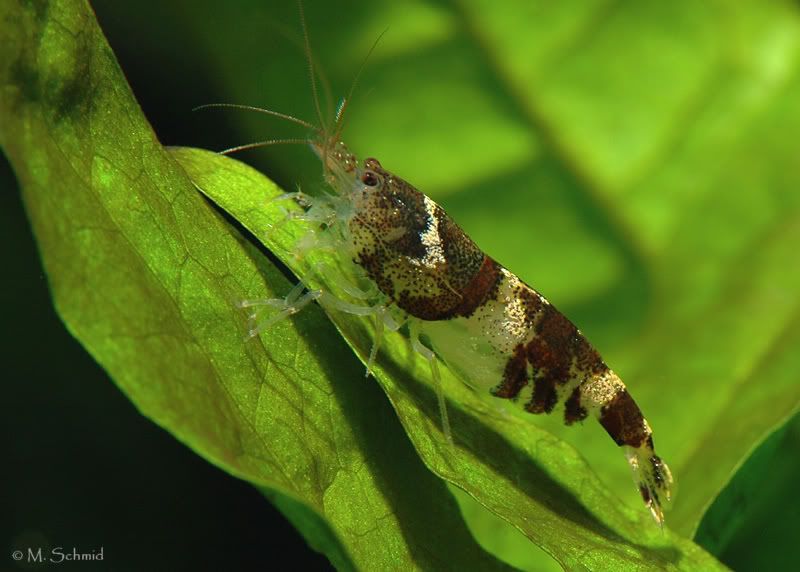
And finally, although not the best, something I've been practicing ... because hey, what's a post without a flying shrimp or two?



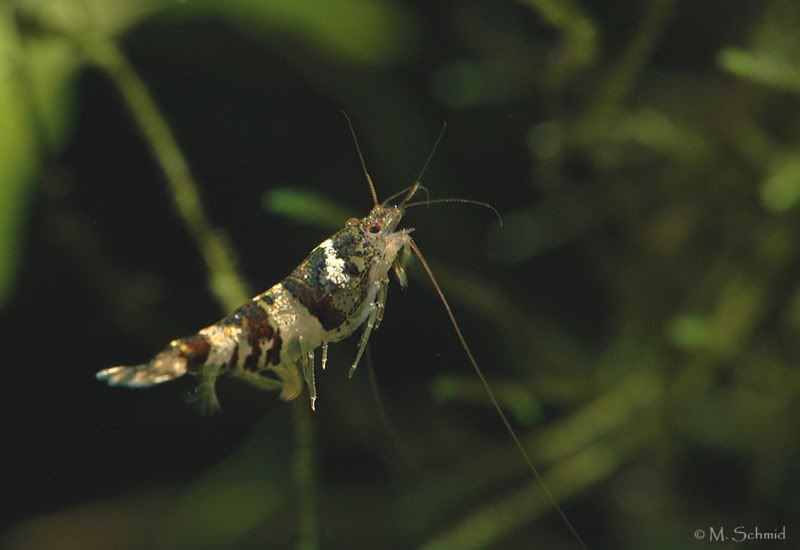
Mustafa, I've got some questions for you. I know that ID's are more accurate if parts are studied under a microscope and compared to journal descriptions ... I'm wondering, even then, wouldn't it be difficult to tell if a shrimp is a hybrid if the resulting shrimp looks more specifically like the one species of shrimp, rather than the other? In other words, that the offspring does not "form" a "new-looking" species, but looks more like one than the other? Hard to describe what I'm trying to say

. Also, I have been thinking lately that the Bee and Bumblebee are more closely related than what I might have thought at first, or at least, that there are much more varieties of Bumblebees than first thought - do you have any updated opinions one way or the other? Lastly, have you heard any reports of CRS and the White-headed Bumblebees being interbred?
-GB









